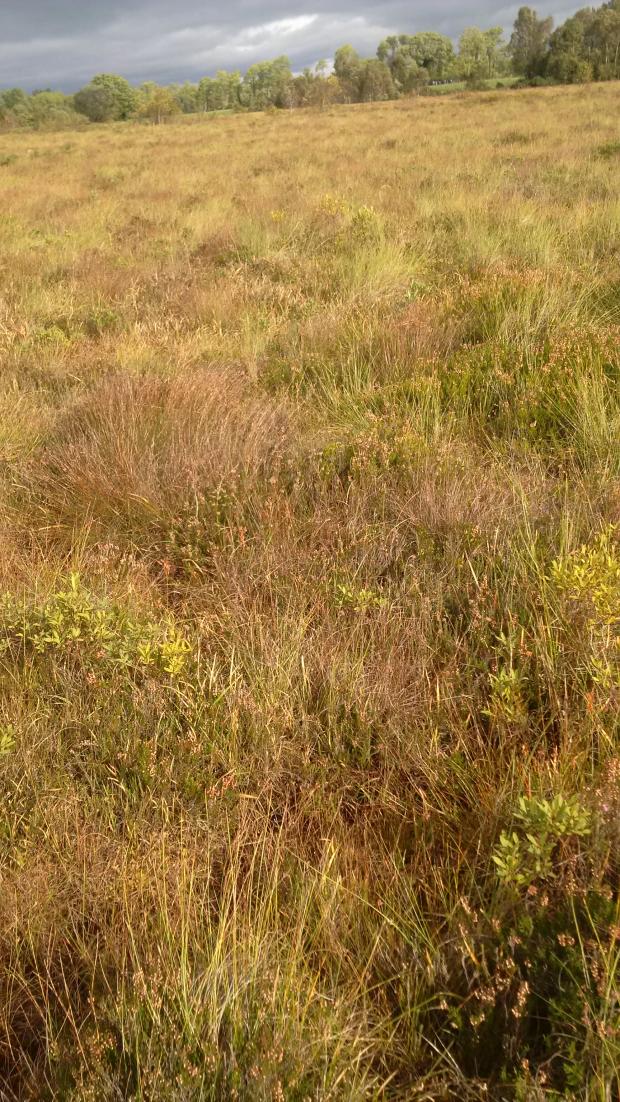
Any modifications to the peatland surface in the way of cutting and burning are confined to the margin, leaving the majority of the bog intact.
Special features include a well-defined, intact dome, which exhibits a wide range of characteristic vegetation and structural features, including pool, hummock and lawn complexes. The vegetation is characterised by a high cover of Sphagnum bog-mosses, ericoid dwarf-shrubs and other associated species. The composition and abundance of these components is dependent on local environmental conditions.
Within the pool complex, flat, water-logged, "lawns" alongside pools are characterised by the prominence of bog Asphodel and the locally distributed white beak-sedge. The three sundews, great, round-leaved and the rare oblong-leaved sundew are also present around the pool margins. The pools are dominated by Sphagnum capillifolium with the notable Sphagnum fuscum and Sphagnum imbricatum both frequently occurring on the bog and forming the largest and best-structured hummocks. Other species present on the hummocks include heather and cross-leaved heath, with a scattered cover of deergrass, hare's-tail cottongrass and common cottongrass. Bog Asphodel is the main component of the wet lawn vegetation.
The lagg surrounding the bog has been cut for turf, creating a mosaic of habitats. These include grassland, dominated by purple moor-grass and scrubby woodland, in which downy birch is the main species.
The invertebrate fauna is largely characteristic of lowland raised bogs throughout Northern Ireland, with a predominance of acidophile, or acid-tolerant species. This includes the water beetles Hydroporus incognitus, Hydroporus gyllenhali, Hydroporus obscurus, Ilybius guttiger and Graptodytes granularis.
Both Jack Snipe and Snipe have been recorded on the site.
Related articles
- ASSI Guidance for Public Bodies/Competent Authorities
- Coastal Areas of Special Scientific Interest
- Conservation Management Plans (CMPs)
- European Marine Sites - Marine Special Areas of Conservation and Special Protection Areas
- Introduction to Conservation Management Plans (CMPs) for Northern Ireland’s Special Areas of Conservation
- Marine Conservation Zones
- Marine Protected Areas
- Marine Ramsar sites
- Portrush Coastal Zone
- Special Areas of Conservation
- Special Areas of Conservation for Harbour porpoise
- Special Protection Areas
